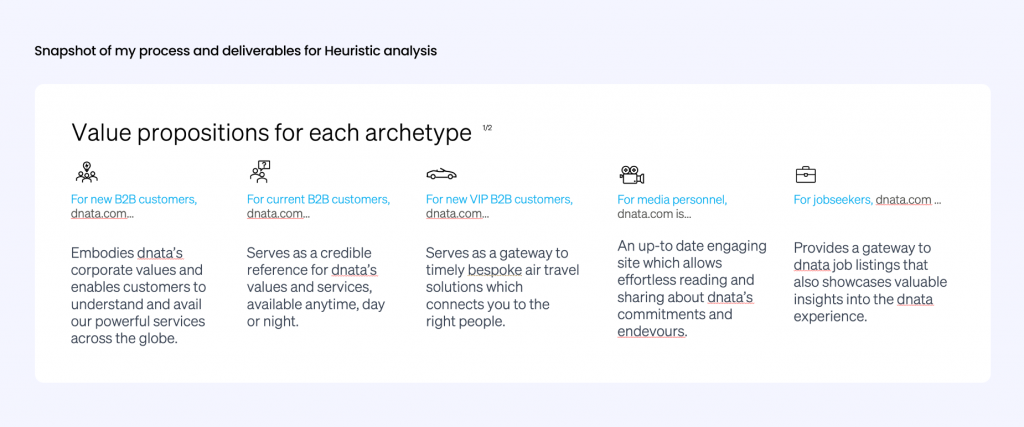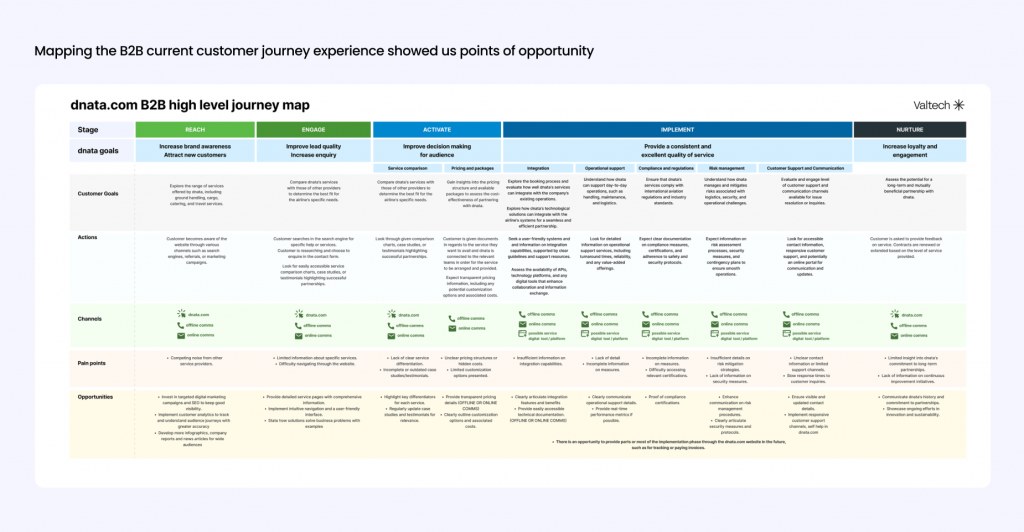Project aim
For users : Will be able to get a better understanding of the brand. Users should be able to find information they need quicker, and be able to get in touch for new enquiries.
For business : Provide a world class representation for their brand and be able to generate new leads for their services.
My role
I was leading this project from an Experience perspective. I had a few touchpoints with the Head of UX Design at the very beginning of the project in order to kick start the project.
Challenge
The aim was to redesign dnata.com to address usability and experience issues whilst catering for business requirements.
Discovery through research
I led all the activities for research with support from 1 or 2 facilitators in the workshops. The overall objective was to collate the findings so that we can map the value proposition for dnata as a whole. The discovery phase with the following activities:
Benchmarking to understand the landscape
- Analysis of spotted strategies
- Features comparison
- Heuristics benchmarked :
- Usability (Neilsen Norman’s 10 heuristics)
- Experience (I strategically defined additional criteria)
As a high level overview, overall competitors excelled at :
- Sustainable initiatives being embedded in different parts of the site (through content)
- Directing B2B users through the site through signposting and navigational elements
- Using structure and well thought out journeys to not only show the big picture in services, but also to direct, and recommend users to specific details and key areas of interest to them.
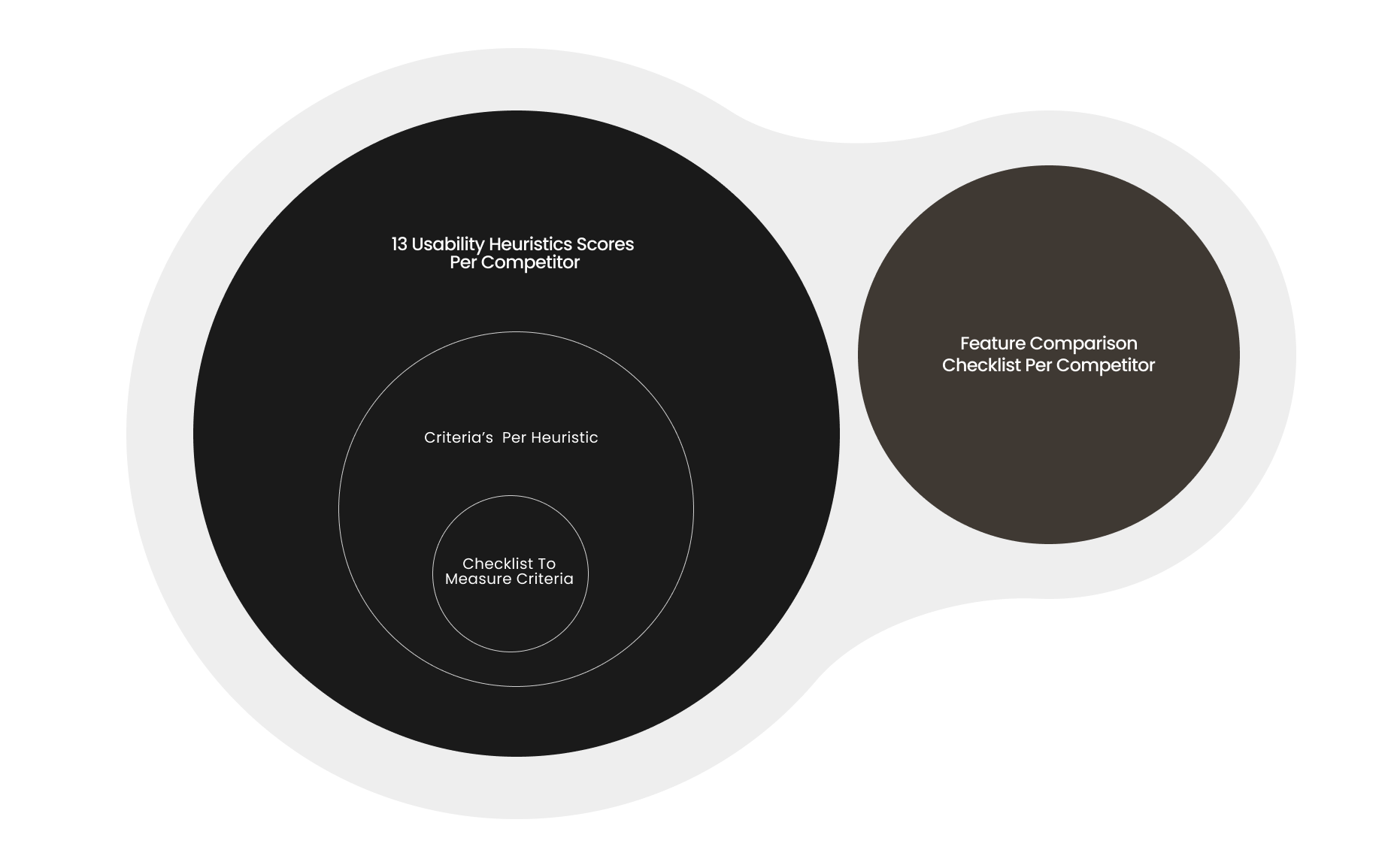
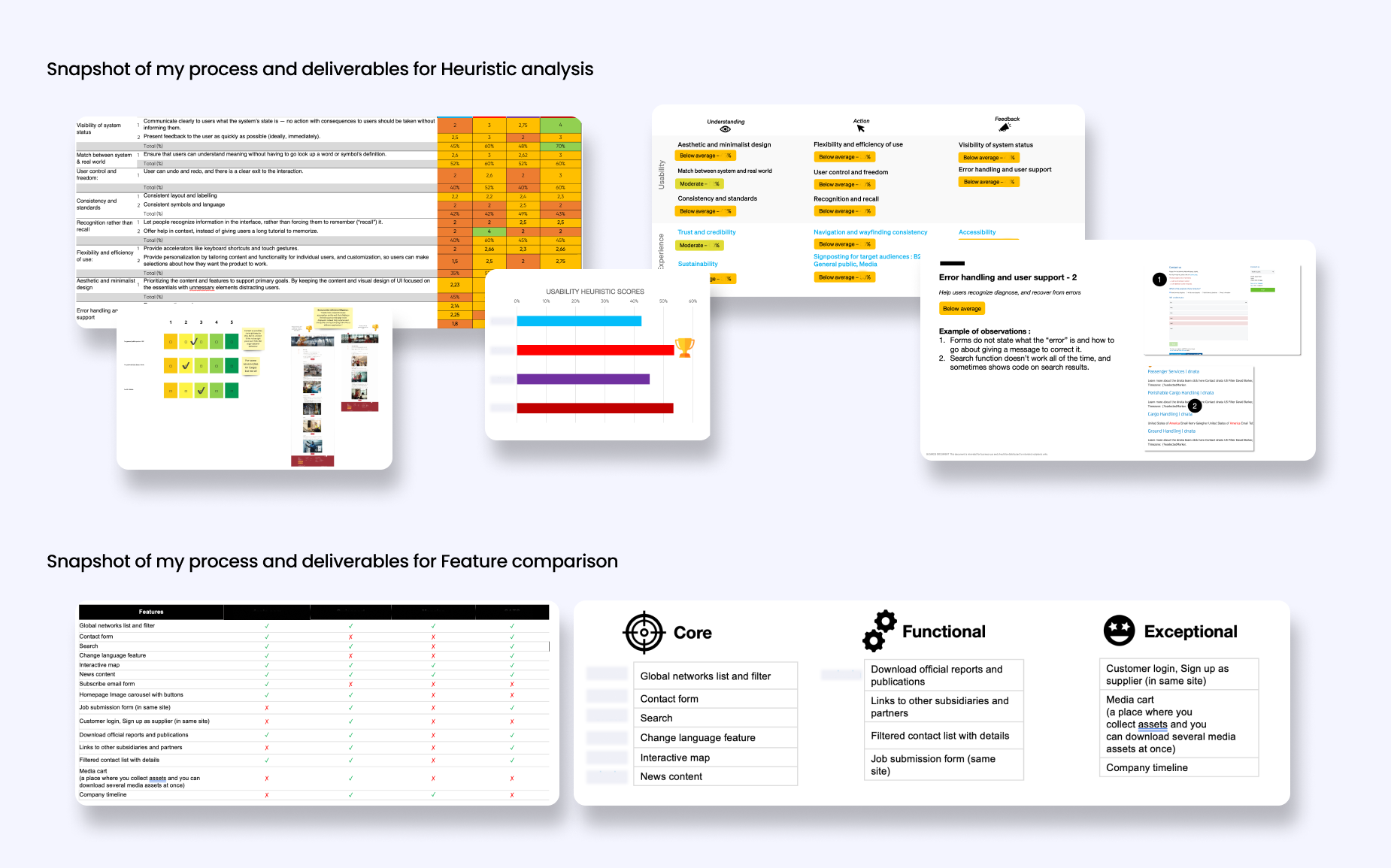
Planning and leading a series of 7 physical workshops
I planned and led 7 key stakeholder workshops. This helped form a foundation of our understanding of dnata, this was with various team members across 7 different service groups (from Cargo to Careers).
To better understand dnata through the three following lenses:
- Business priorities and objectives
- Current challenges & opportunities
- Core user segments
- Underlying value proposition
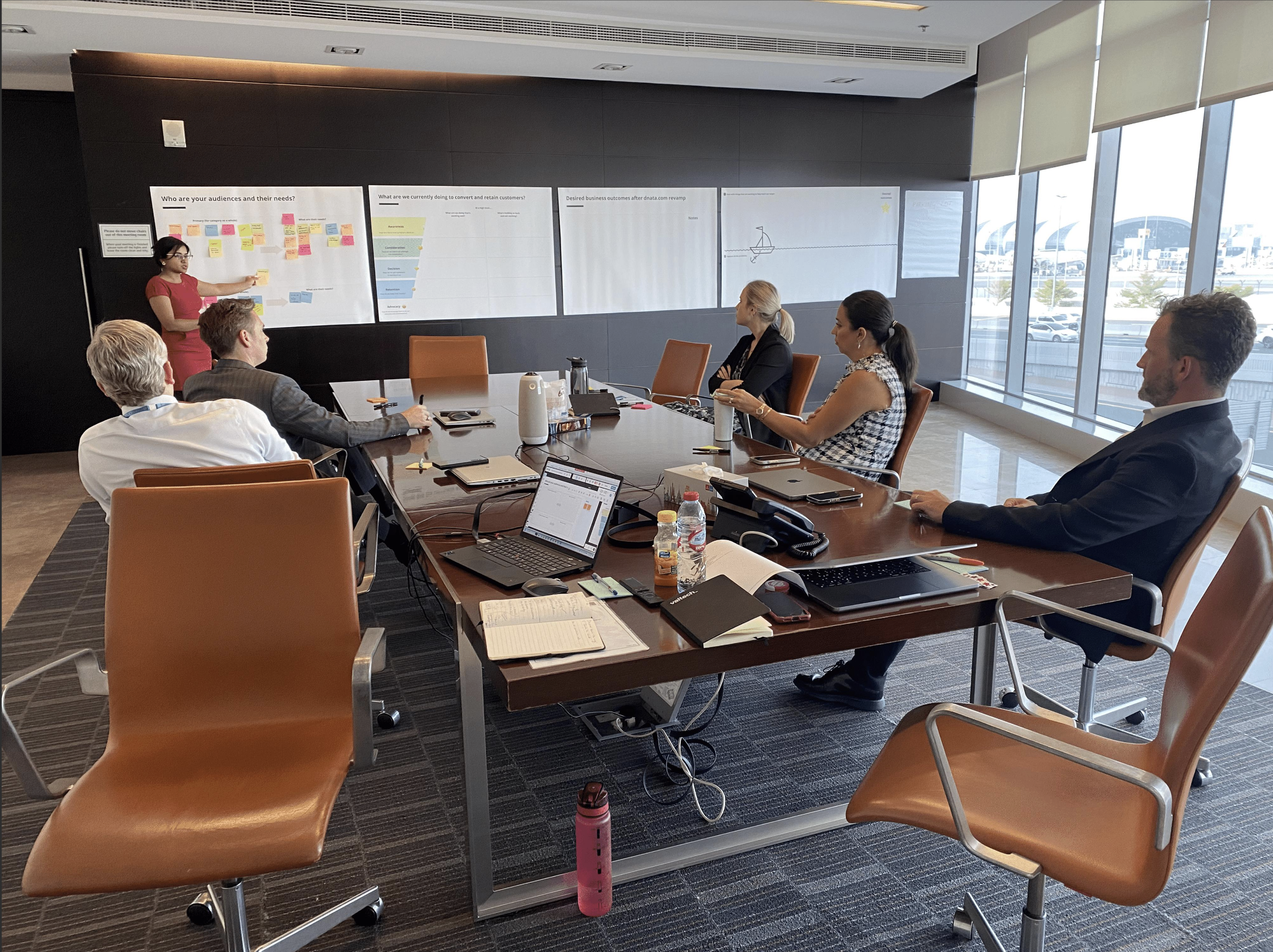
Stakeholder surveys provided additional insights
In order to use time effectively, we also conducted a survey. Since we were limited by time and access to actual users, this provided a fundmantel area of getting insights about common problems users would face.
The data (14+ responses) gave us richer insights into what the problems were for each service category and user groups. This was also key in telling us what made dnata different to its competitors.
Refining our understanding
To summarise our learnings we created and agreed with the key stakeholders on 6 how might we statements… finding a solution to these would solve the major problems and aims for the site.
How might we inspire audiences to identify with our values and recognise the quality of our service?
How might we inspire audiences to identify with our values and recognise the quality of our service?
How might we showcase the world-class quality of our service
How might we guide customers to the correct contact information to avail our services?
How can we guide audiences to self-service their queries based on context in an efficient manner?
How might we provide customers with a comprehensive understanding of dnata services while catering to their specific needs and interests?
I also mapped and cross referenced the how might we statements with our understanding of the different audience archetypes. I created the following in order to move forward with design:
- 6 different archetypes and their needs, in order to make sure we are covering different audience types
- A general journey map that would apply to the common needs across the archetypes.
- A value proposition for each archetype
- I formed an overall value proposition, to make sure that throughout the proposition we are always aligned on our goals and objectives for the users and the business.
Overall value proposition
An intuitive and modern gateway that showcases dnata's comprehensive range of global services, highlighting the dnata difference through quality and care provided by our worldwide teams.
Execution
After conducting benchmarking and examining various corporate websites for common patterns and solutions, I strategically mapped out the different considerations across the flow of pages. Following that, I created wireframes for individual pages and templates.
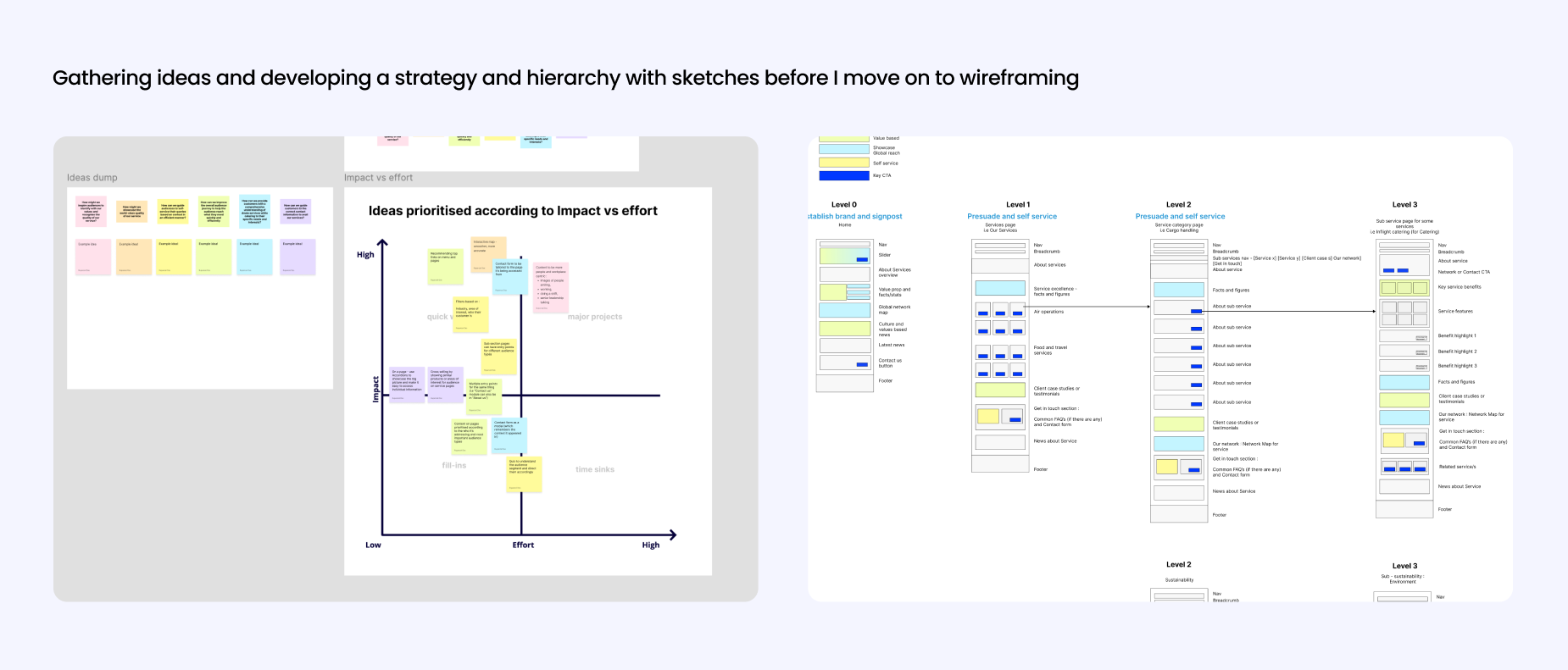
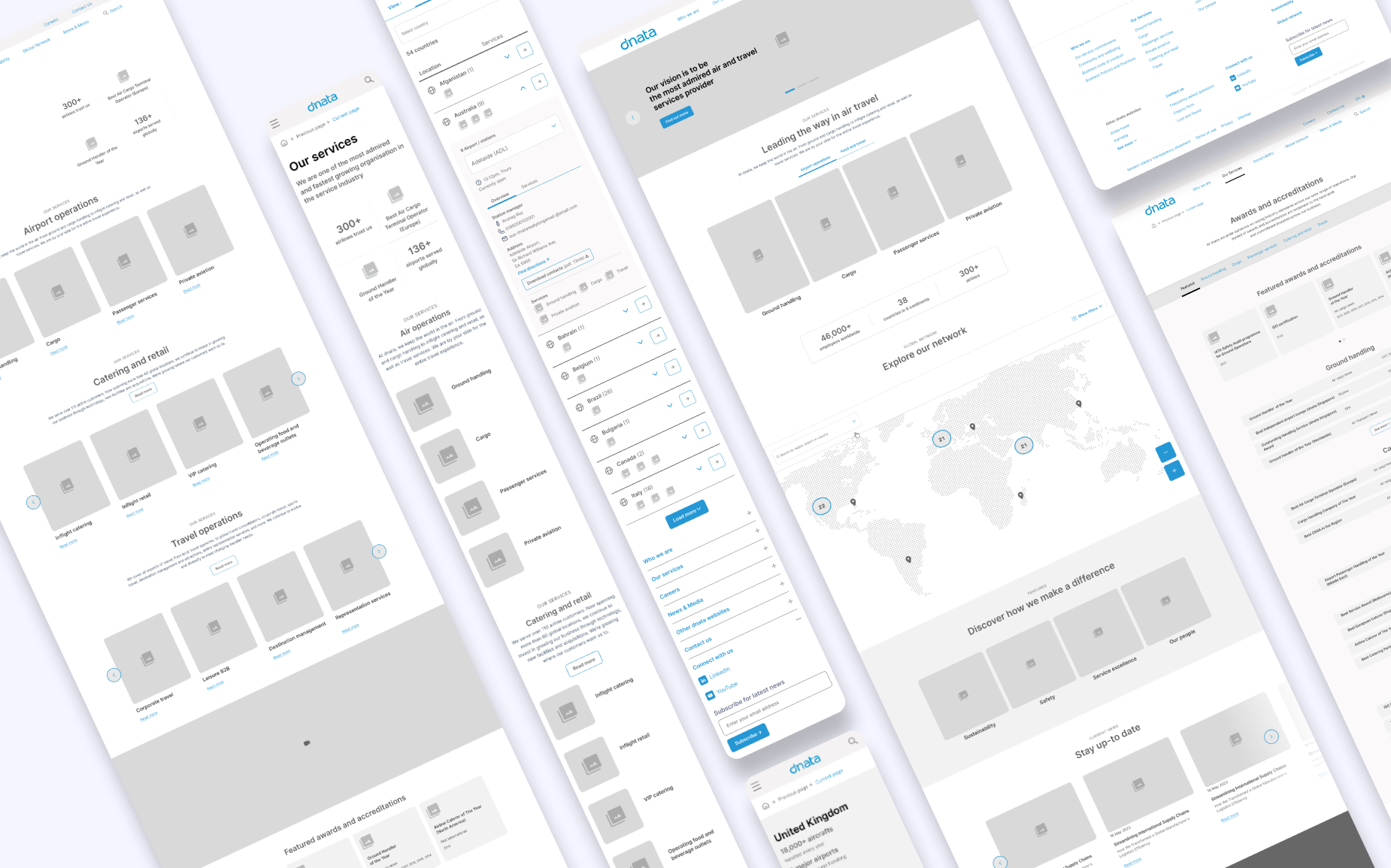
Rollout and Impact
The project was completed successfully and final designs are at a stage where it’s handed over to be built. Please ask me about this project if you want to know more about the final designs.
